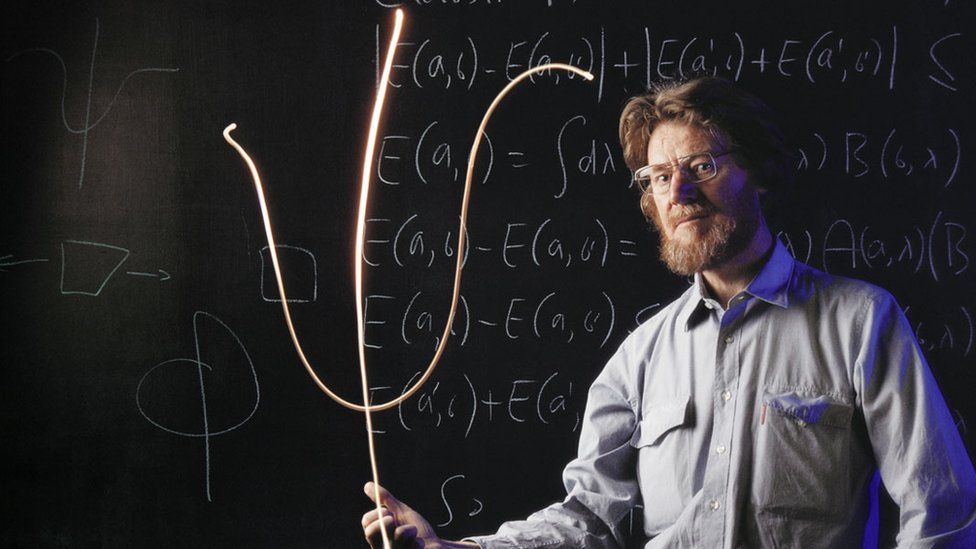John Bell: The Belfast scientist who proved Einstein wrong
- Published

Fifty years ago, Belfast scientist John Stewart Bell proved Albert Einstein wrong.
Bell is regarded as one of the 20th Century's greatest physicists, and was widely believed to have been in line for a Nobel Prize in Physics when he died in 1990 from a stroke.
Bell's Theorem - more formally known as 'On the Einstein-Podolsky-Rosen paradox' - demonstrated that Einstein's views on quantum mechanics - the behaviour of very small things like atoms and subatomic particles - were incorrect.
First published on 4 November 1964, the anniversary has been celebrated with a series of tributes in his home city.
His theory continues to have a lasting impact on modern physics, and is said to have laid the foundation for quantum information technology.
This area of computing and cryptography is of particular use in the financial services and cyber-security industries.
Bell was born in Belfast in 1928 to a family from a poor background, but went on to teach at CERN, Europe's particle physics lab near Geneva, Switzerland.
He was the only one of his siblings to stay at school over the age of 14, and his family could not afford to send him to one of the city's grammar schools.
Instead he attended Belfast Technical High School, now Belfast Metropolitan College, and then entered Queen's University.
Both institutions have been honouring their illustrious alumnus to mark the anniversary of his scientific breakthrough.
The building that once housed the old Belfast Metropolitan College, commonly known as the 'Tech', has been renamed John Bell House.
It is due to reopen in September 2016 as the first private student accommodation in the city, providing 400 student beds.
Artistic responses
The Naughton Gallery at Queen's is opening an exhibition on Wednesday that is inspired by Bell's life and work.
'Action at a Distance: The Life and Legacy of John Stewart Bell' includes photographs, objects and papers relating to Bell's work alongside videos exploring his science and legacy.
The exhibition also includes artistic responses to Bell's Theorem including a contemporary piece by Aboriginal artist Richard Bell that is on show in Europe for the first time.
Curator Shan McAnena said: "This exhibition combines both Bell the man and Bell the scientist.
"Although he was a physicist dealing in highly complex theories of quantum mechanics, Bell was also a philosopher, and we have tried to reflect some of that duality in this show."
An earlier attempt to honour Bell in the city by renaming a street in the Titanic Quarter after him was turned down by the council in September, because its policy is to avoid using individuals when naming roads.
However, the city hall has been lit up in rainbow colours to mark the anniversary of Bell's Theorem.
Fifty years after his breakthrough, it seems that his work is finding success in reaching a lay audience.
Prof Mary Daly, president of the Royal Irish Academy, said: "The Academy wants John Bell to be the best known scientist in Northern Ireland and to be acknowledged as one of the most important scientists in the world."
- Published9 September 2014